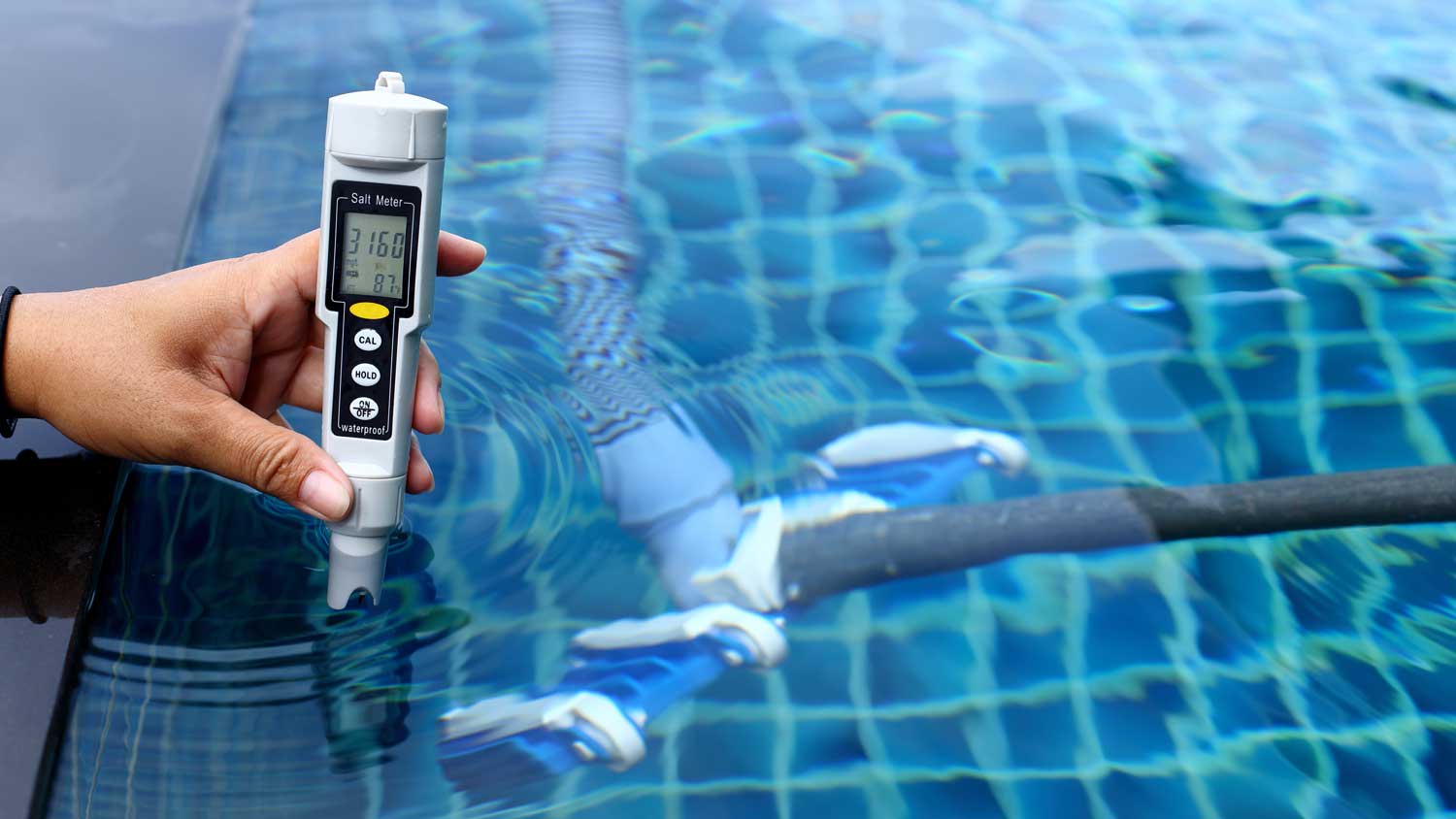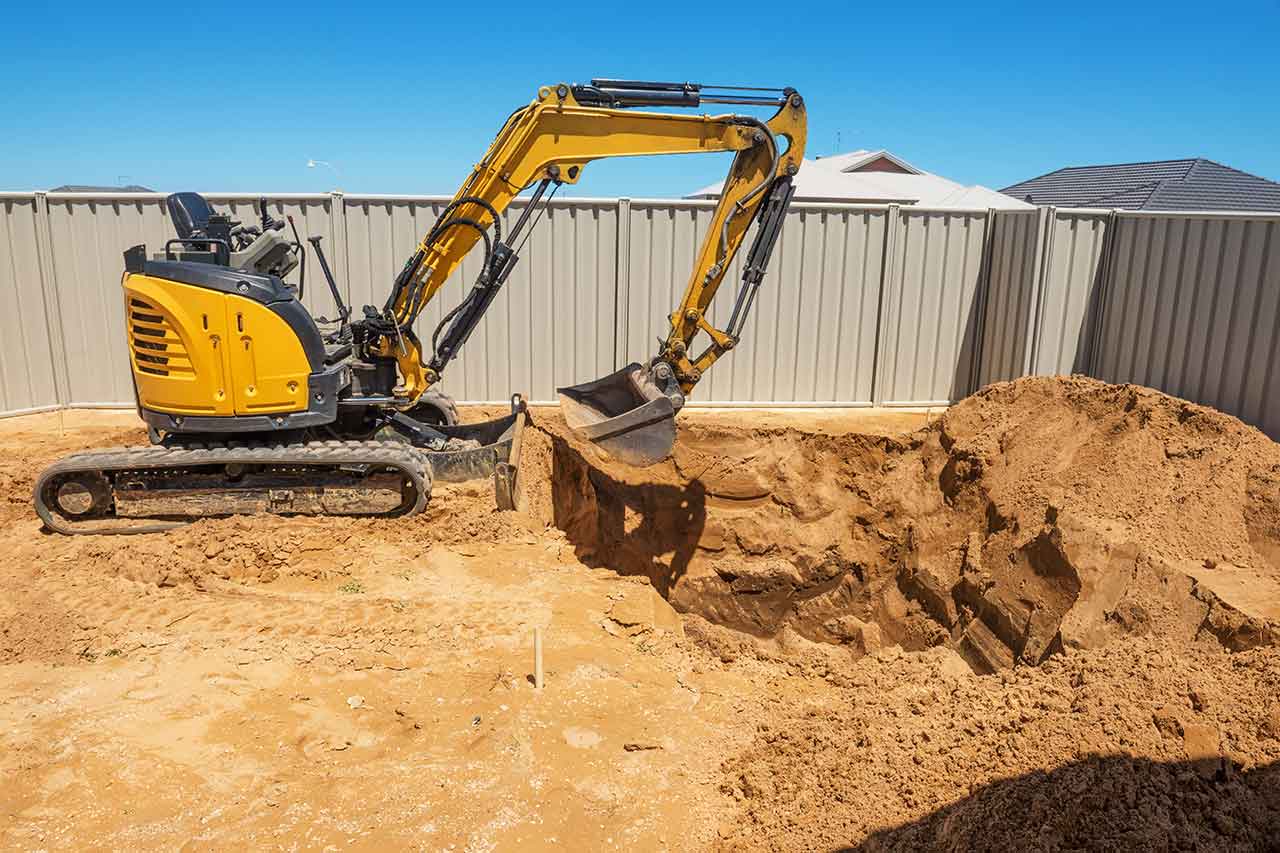
Compare pool cover costs from basic solar and winter covers to high-end automatic systems for added convenience and maximum safety for your pets and family.
Get ready for pool season with a little pool seasoning


Keeping your pool at the ideal salt levels ensures a healthy swimming experience without harsh chemicals. This pool salt calculator lets you know how much salt your pool needs to reach optimal levels. Use your pool’s volume and an average salt level of 3,200 PPM to estimate the pounds of salt needed. With this information, you can be sure that your pool is at the recommended salt levels.
Using your pool size and current salt measurements, apply the following formula to determine how much salt your pool needs:
Salt to Add (in pounds) = Gallons x 8.35 x (0.0032 – (current salt ppm / 1,000,000))
If you had an 8,000 gallon pool with a current salt level of 1,000 ppm, you would need to add 147 pounds of salt.
The first step to using the salt pool calculator is to measure your pool’s current salt levels. The ideal level is 3,200 PPM (parts per million). If your pool’s levels are lower than that, you need to add more salt. If they’re higher, you’ll need to add water. How much salt or water you add depends on your pool’s water volume.
Using current salt levels and your pool’s volume information, you can refer to the table below to estimate how much salt your pool needs to reach the ideal 3,200 PPM.
| Current Salt Level | Salt Needed (8,000 Gallon Pool) | Salt Needed (12,000 Gallon Pool) |
|---|---|---|
| 0 | 213 lbs. | 320 lbs. |
| 1,000 | 147 lbs. | 220 lbs. |
| 2,000 | 80 lbs. | 120 lbs. |
| 3,000 | 13 lbs. | 20 lbs. |
| 3,600+ | Dilute | Dilute |
If you’re not sure how many gallons of water your pool holds, you can quickly estimate it using a few measurements. The formula to calculate your pool’s water volume varies depending on the shape of your pool.
To calculate volume for your rectangular pool, start by taking the following measurements:
Width (in feet)
Length (in feet)
Average Depth (in feet)
Use those measurements and the following formula to calculate the amount of water that your pool holds.
Volume = (width x length x depth) x 7.48
For a rectangular pool that’s 18 feet long by 9 feet wide and 6 feet deep, your pool volume is 7,271 gallons.
For a round pool, start by calculating the pool’s radius in feet. This is just half the distance from one side of the pool to the other.
With that information, use the following formula to calculate the pool volume:
Volume = (3.14 x r squared x depth) x 7.48
For a round pool with a radius of 5 feet and a depth of 6 feet, your pool’s water volume is 3,533 gallons.
Once you know your pool volume and how much salt you need, find a swimming pool contractor to help maintain your pool. The cost of maintaining a swimming pool ranges between $120 and $370, depending on your pool type and where you live.
If you’re thinking of installing or making the switch from chlorine, the average cost of converting to a salt water pool ranges between $12,000 and $67,000. To help you make the best decision, these are the pros and cons of salt water vs. chlorine.
From average costs to expert advice, get all the answers you need to get your job done.

Compare pool cover costs from basic solar and winter covers to high-end automatic systems for added convenience and maximum safety for your pets and family.

Budget for saltwater pool costs based on factors including pool size, materials, labor, location, site preparation, potential upgrades, and more.

Budget for pool excavation costs based on factors such as pool size, accessibility, professional labor, ground material, time of year, and more.

Wondering who to hire to remodel a pool? Learn when to call a pool remodeling company vs. a pool installer, plus the steps pros take to transform your pool.

Discover how much pool maintenance costs based on factors like the size, type, location, frequency, and level of service.

Budget for pond maintenance costs based on factors such as pond type, size, draining and refilling, features, winterization, and more.